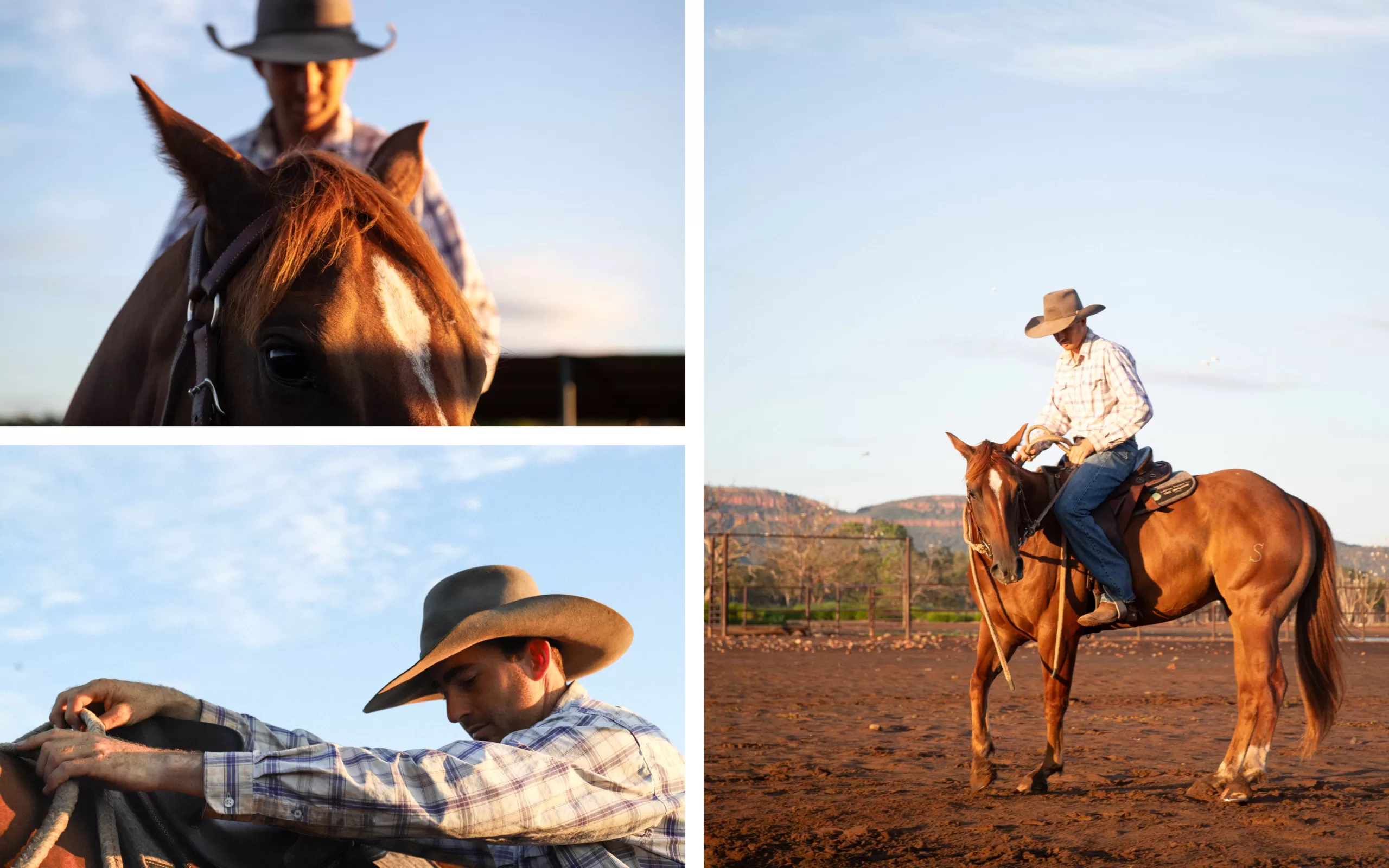Hamish Lamond works day in, day out doing what some see as a dying art.
He takes horses — animals unbroken and fearful of humans — and teaches them to feel safe under a saddle.
It is an ancient role, fading in the Australian consciousness as urbanisation continues to grow.
Today, 72 per cent of Australians live in major cities.
Only 2 per cent of Australians live remotely, where Hamish’s work is done.
Even remote northern cattle stations are opting for motorbikes and helicopters instead of traditional mustering done on horseback.
Loading…
But the gradual creep of diesel-driven expedience does not bother him.
“I do get asked a bit about why I keep training horses, and I just keep coming back to the fact I genuinely just love being on their backs,” Mr Lamond said.
“I love being able to do this work.”
For Hamish, the lessons horses teach us will never go out of fashion.
“I know some values that I place highly in myself have come from working with horses,” he said.
“The ones that I really hold in high regard are compassion and empathy.
“To get the best out of horses, they have to be high up on your list.”
Journey to horsemanship
Hamish broke in his first horse at the age of 13.
“I grew up east of Perth in a little town called York and we always had horses around as kids, so I suppose that’s where the love came from,” he said.
While his dad had broken in — or “started” — horses in the past, and Hamish had read books on the topic, he went into the experience as a rookie.
“I didn’t really have any idea what I was doing,” he said.
“I was just fortunate I had a really soft, kind horse that kept me safe through the process.”
A move to northern WA’s Kimberley region after school widened his eyes. In the outback north, he could make a living on a horse’s back.
“I can remember the day, I can even remember where we were; I was sitting on a horse blocking up some cattle and I was like, ‘this is pretty cool, I’m getting paid to do what I love’.”
Training horses, training people
To train a horse, Hamish explained, you have to reflect on yourself as a person.
“Horses are prey animals, so they’re scared of us,” he said.
“I have to be very mindful of my body language and everything I do.
“If I up my energy, they move off me; if I slow, they slow.”
It is a long process — to reach the point of placing a saddle on a horse’s back can take days.
It is a practice of patience that brings out often unacknowledged emotions in the people doing the work.
“The horses are such a good indicator of where you are at as a person. They’ll react to you, you can’t hide anything; they know,” he said.
“I’ve seen horses that all come from different backgrounds, different breeds — but you can tell they’ve all been trained by the same person.
“You come out in them.”
A changing world
In his years spent in the northern cattle industry, Hamish has seen firsthand the mechanisation of station work — and he is not one to criticise it.
“You can work cattle extremely well in a helicopter or on a motorbike,” he said.
But the difference horses make, he explained, is in the people.
“When you’re learning to feel cattle and read them, you need to get up on the horse and hear all the sounds and get a real feel of what the mob is doing.
“And I think the learning piece for the staff is huge, because with a motorbike and a helicopter you can cover a lot of errors, but with a horse you have to be watching and reading the situation.”
Hamish believes. it is the people who are willing to make the time to do this that are crucial to the industry’s success
“I think from the staff that [working on horses] attracts and the values that it instils, I think it’s huge to the industry.
“It would be a shame to see it diminish.”
Stories from farms and country towns across Australia, delivered each Friday.
